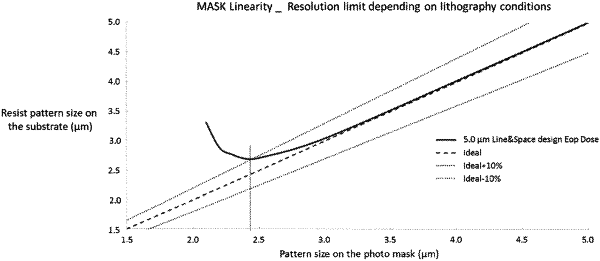| CPC B32B 38/0036 (2013.01) [B32B 5/145 (2013.01); G03F 7/18 (2013.01); G03F 7/24 (2013.01); G03F 7/405 (2013.01); B32B 2457/202 (2013.01)] | 13 Claims |

|
1. A method of manufacturing a fine pattern comprising the following steps of:
(1) a step of coating a resist composition comprising a novolak resin having an alkali dissolution rate of 100 to 3,000 A on a substrate to form a resist composition layer;
(2) a step of subjecting said resist composition layer to exposure;
(3) a step of developing said resist composition layer to form a resist pattern;
(4) a step of subjecting said resist pattern to flood exposure;
(5) a step of coating a fine pattern forming composition on the surface of said resist pattern to form a fine pattern forming composition layer;
(6) a step of heating said resist pattern and said fine pattern forming composition layer to cure the regions of said fine pattern forming composition layer in the vicinity of said resist pattern and to form an insolubilized layer; and
(7) a step of removing uncured regions of said fine pattern forming composition layer and
wherein the exposure in the step (2) is performed using a projector lens having a numerical aperture of 0.08-0.15 and
wherein a resist pattern is formed and has a cross section shape of a hole or a line is observed, L1 is the pattern width at a 10 percent portion (D1) of the depth and L2 is the pattern width at a 90 percent portion (D2) of the depth and has a Taper index (L2/L1) of the fine pattern is 1.05-18.
|